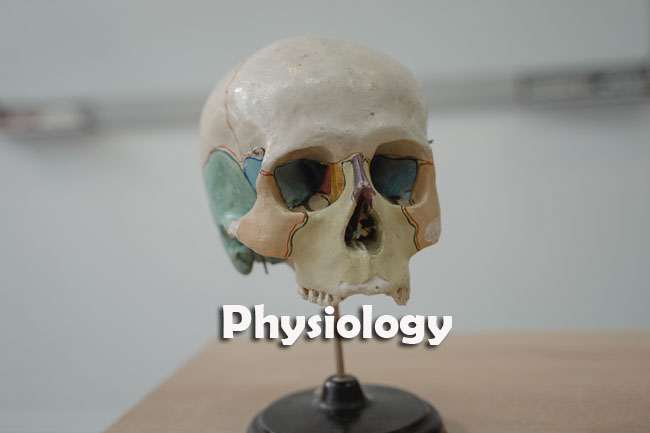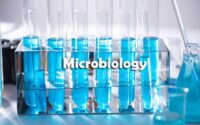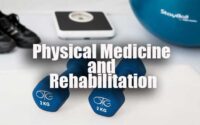Physiology Practice Set
Physiology Practice Set Papers are published here to help the Exam applicants. A large number of aspirants are searching on the Internet for the Physiology Practice Set Model Papers. It is the right place for those hesi a2 practice test Papers.

Since, we are providing the valuable information about the Physiology Practice Set Last Ten Years Exam Question Papers & Answers. The model papers seekers can stop your process of searching for the hesi a2 practice test physiology .
Because we have given all the Sample Papers for the hesi a2 practice test physiology. Just in simple steps, you will download the hesi a2 practice test physiology Exam Papers freely.
Practice Set on Physiology
1. The direction from which sound originates is determined by which brainstem structure
(1) Inferior colliculus
(2) Superior olivary nucleus
(3) Cochlear nucleus
(4) Lateral leminiscus
2. During photoreception, there is an increase in all of the following EXCEPT:
(1) Sodium influx in anter segment of rods
(2) Transducin
(3) cGMP phosphodiesterase
(4) cAMP
3. Which retinal cells have action potential?
(1) Amacrine cells
(2) Ganglion cells
(3) Bipolar cells
(4) Photoreceptors
4. Which muscle contracts in pupillary light reflex?
(1) Pupillary dilator muscle
(2) Pupillary sphincter muscle
(3) Radial fibres of iris
(4) Ciliary muscle
5. In a normal menstrual cycle of 28 to 30 days, ovulation would generally occur between:
(1) Day 6 to 8
(2) Day 14 to 16
(3) Day 18 to 20
(4) Day 22 to 24
6. The source of estrogen and progesterone in the last seven months of pregnancy is
(1) Placenta
(2) Ovary
(3) Corpus Luteum
(4) Anterior Pituitary
7. The principal steroid secreted by fetal adrenal cortex is:
(1) Corticosterone
(2) Dehydroepiandrosterone
(3) Cortisol
(4) Pregnenolone
8. The percentage of total body weight that is constituted by intracellular fluid compartment is:
(1) 20%
(2) 40%
(3) 60%
(4) 5%
9. Connexons are associated with:
(1) Gap Junctions
(2) Desmosomes
(3) Hemidesmosomes
(4) Tight Junctions
10. Na+ — K+ ATPase plays an important role in:
(1) Simple diffusion
(2) Facilitated diffusion
(3) Primary active transport
(4) Secondary active transport
11. Normal pH of human plasma is:
(1) 7.20 —7.30
(2) 7.35 —7.45
(3) 7.50 — 7.60
(4) 7.10 —7.20
12. All of the following are families of molecular motors EXCEPT:
(1) Kinesin
(2) Dynein
(3) Actin
(4) Myosin
13. Which of the following is an Agranulocyte?
(1) Neutrophil
(2) Monocyte
(3) Eosinophil
(4) Basophil
14. Which of the following immunoglobulins is a pentamer?
(1) IgM
(2) IgA
(3) IgG
(4) IgE
15. The resting membrane potential of a neuron Is:
(1) -80 mv
(2) -60 mV
(3) —70mV
(4) -90 mV
16. The period from the time the firing level is reached until repolarisation is one-third complete is called:
(1) Hyper polarisation
(2) Resting period
(3) Relative refractory period
(4) Absolute refractory period
17. The type of nerve fibre most susceptible to hypoxia is:
(1) A
(2) B
(3) C
(4) All are equally susceptible
18. The area between two adjacent ‘Z’ lines is called:
(1) Sarcomere
(2) Centromere
(3) Sarcoplasm
(4) Cytoplasm
19. At resting length of a muscle:
(1) Active tension is maximum
(2) Passive tension is maximum
(3) Active tension is minimum
(4) Passive tension is minimum
20. Which of the following is FALSE for white muscle fibre?
(1) They are specialised for fine, skilled movements
(2) Have short twitch duration
(3) Oxidative capacity is high
(4) Ca2+ pumping capacity of sarcoplasmic reticulum is high
| Questions and Answers | Quiz |
| MCQs | Practice Set |
| Nursing Exam | HESI A2 |
21. Extrinsic pathway of clotling is triggered by:
(1) Calcium
(2) Tissue Thromboplastin
(3) HMW Kininogen
(4) Factor XII
22. Vitamin K dependent clotting factor is:
(1) Factor Xi
(2) Factor IV
(3) Prothrombin
(4) Factor V
23. Haemoglobin appears first in:
(1) Early normoblast
(2) Intermediate normoblast
(3) Late normoblast
(4) Pro-normoblast
24. Which of the following is NOT seen in cardiac muscle?
(1) All or None phenomenon
(2) Length — tension relationship
(3) Tetanus
(4) Pacemaker potential
25. Site of Action of ADH is:
(1) Proximal Convoluted tubule
(2) Distal Convoluted tubule
(3) Collecting duct
(4) Ascending limb of Loop of Henle
26. Normal value of GFR (Glomerular Filtration Rate) in an adult is:
(1) 125 ml/min
(2) 125 ml/hour
(3) 125 I/min
(4) 125 l/hour
27. Which of the following is NOT re-absorbed along with Na+ in proximal convoluted tubule?
(1) Glucose
(2) Amino Acids
(3) Bicarbonate
(4) Urea
28. Renal threshold of glucose in venous blood is:
(1) 180 g/dl
(2) 180 mg/dl
(3) 180 g/l
(4) 180 mg/l
29. The sensor for tubuloglomerular feedback is:
(1) Macula Densa
(2) Proximal Convoluted tubule
(3) Distal Convoluted tubule
(4) Collecting Duct
30. Na+, K+ and Cl- are transported out of which portion of Loop of Henle:
(1) Thick segment of ascending limb
(2) Descending limb
(3) Both ascending and descending limb
(4) Not transported through Loop of Henle
31. Limiting pH of urine is:
(1) 3.5
(2) 4.5
(3) 5.5
(4) 6.5
32. Ethanol acts as a diuretic by:
(1) Producing osmotic diuresis
(2) Inhibiting action of vasopressin on collecting duct
(3) Inhibiting vasopressin secretion
(4) Supplying acid load
33. The normal direction of mean QRS vector Is:
(1) —30° to +110°
(2) —30° to -110°
(3) +30° to +110°
(4) +30° to-110°
34. “A wave” of jugular pulse is due to:
(1) Ventricular systole
(2) Bulging of tricuspid valve during ventricular systole
(3) Atrial systole
(4) Bulging of mitral valve during ventricular systole
35. Time taken for conduction of electrical activity from SA node to AV node is denoted by:
(1) PR interval
(2) ST segment
(3) QT interval
(4) Cannot be determined by ECG
36. Cardiac output can be determined by all of the following EXCEPT:
(1) Fick’s principle
(2) Ventilation/Perfusion ratio
(3) Echocardiography
(4) Thermodilution
37. Preload in heart is determined by:
(1) End systolic volume
(2) Volume of blood in aorta
(3) Ventricular end diastolic volume
(4) Ejection fraction
38. Sounds of Korotkoff are due to:
(1) AV valve closure
(2) Arterial turbulence
(3) Arterial expansion
(4) Aortic valve closure
39. Which of the following is a compensatory mechanism in Hypovolaemic shock?
(1) Increased renal blood flow
(2) Decrease in cortisol
(3) Decrease in vasopressin
(4) Decrease in cutancous blood flow
40. Vagal stimulation causes:
(1) Increase in R-R interval
(2) Increase in heart rate
(3) Increase in cardiac output
(4) Increase in force of contraction
41. Nitrogen washout method is used to measure:
(1) Functional Residual Capacity
(2) Vital Capacity
(3) Peak Expiratory Flow Rate
(4) Tidal Volume
42. Which of the following is activated in lungs?
(1) Surfactant
(2) Histamine
(3) Prostaglandin
(4) Angiotensin
43. Decrease in O2 affinity of haemoglobin when pH of blood falls is called
(1) Haldane Effect
(2) Wolff Chiakoff Effect
(3) Bohr Effect
(4) Bezold Jarisch Reflex
44. O2 — Haemoglobin curve shifts to right in:
(1) Decrease in temperature
(2) Increase in pH
(3) Rise in temperature
(4) Both Decrease in temperature and Increase in pH



